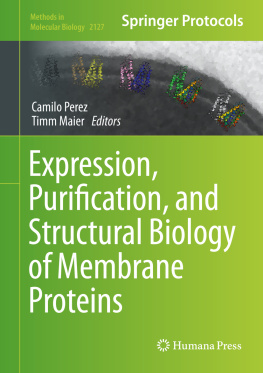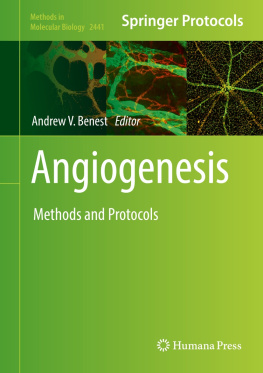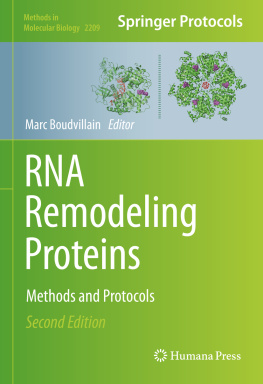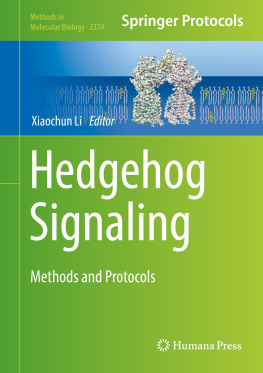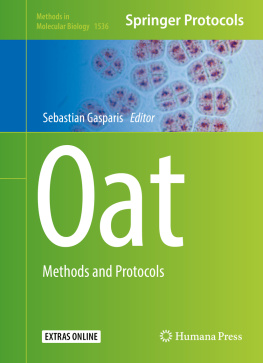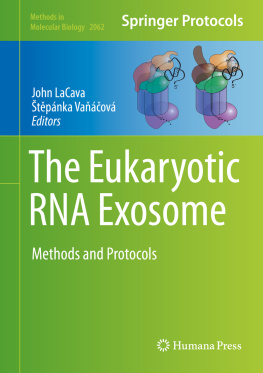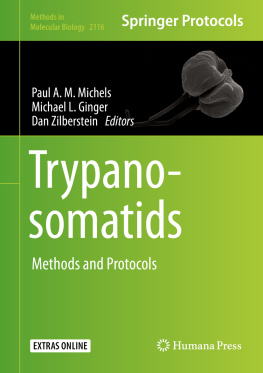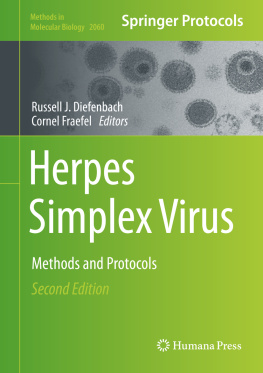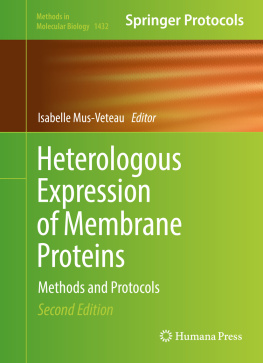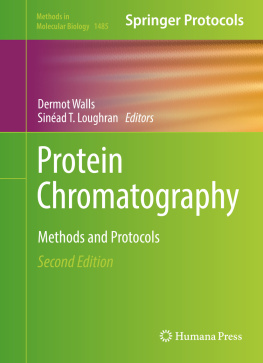Volume 2127
Methods in Molecular Biology
Series Editor
John M. Walker
School of Life and Medical Sciences, University of Hertfordshire, Hatfield, Hertfordshire, UK
For further volumes: http://www.springer.com/series/7651
For over 35 years, biological scientists have come to rely on the research protocols and methodologies in the critically acclaimedMethods in Molecular Biologyseries. The series was the first to introduce the step-by-step protocols approach that has become the standard in all biomedical protocol publishing. Each protocol is provided in readily-reproducible step-by-step fashion, opening with an introductory overview, a list of the materials and reagents needed to complete the experiment, and followed by a detailed procedure that is supported with a helpful notes section offering tips and tricks of the trade as well as troubleshooting advice. These hallmark features were introduced by series editor Dr. John Walker and constitute the key ingredient in each and every volume of theMethods in Molecular Biologyseries. Tested and trusted, comprehensive and reliable, all protocols from the series are indexed in PubMed.
Editors
Camilo Perez and Timm Maier
Expression, Purification, and Structural Biology of Membrane Proteins
Editors
Camilo Perez
Biozentrum, University of Basel, Basel, Basel Stadt, Switzerland
Timm Maier
Biozentrum, University of Basel, Basel, Basel Stadt, Switzerland
ISSN 1064-3745 e-ISSN 1940-6029
Methods in Molecular Biology
ISBN 978-1-0716-0372-7 e-ISBN 978-1-0716-0373-4
https://doi.org/10.1007/978-1-0716-0373-4
The chapter "Biotinylation of Membrane Proteins for Binder Selections" is Open Access This chapter is licensed under the terms of the Creative Commons Attribution 4.0 International License (http://creativecommons.org/licenses/by/4.0/). For further details see license information in the chapter.
Springer Science+Business Media, LLC, part of Springer Nature 2020
This work is subject to copyright. All rights are reserved by the Publisher, whether the whole or part of the material is concerned, specifically the rights of translation, reprinting, reuse of illustrations, recitation, broadcasting, reproduction on microfilms or in any other physical way, and transmission or information storage and retrieval, electronic adaptation, computer software, or by similar or dissimilar methodology now known or hereafter developed.
The use of general descriptive names, registered names, trademarks, service marks, etc. in this publication does not imply, even in the absence of a specific statement, that such names are exempt from the relevant protective laws and regulations and therefore free for general use.
The publisher, the authors, and the editors are safe to assume that the advice and information in this book are believed to be true and accurate at the date of publication. Neither the publisher nor the authors or the editors give a warranty, expressed or implied, with respect to the material contained herein or for any errors or omissions that may have been made. The publisher remains neutral with regard to jurisdictional claims in published maps and institutional affiliations.
This Humana imprint is published by the registered company Springer Science+Business Media, LLC, part of Springer Nature.
The registered company address is: 1 New York Plaza, New York, NY 10004, U.S.A.
Preface
Membrane proteins mediate fundamental biological processes such as signal transduction, transport processes across membranes, sensing of chemical signals, and coordination of cellcell interactions. Numerous diseases in humans are linked to membrane proteins, making them important targets for drug development. Inhibitors targeting membrane proteins of pathogens are highly relevant for establishing novel antimicrobial treatments. Therefore, understanding the molecular mechanisms of membrane proteins is not only of fundamental biological interest but also provides opportunities for improving human health. However, membrane protein research entails several specific challenges, such as low expression yields, the requirement for solubilization, and the need for highly sensitive tools for structural and mechanistic characterization. In this book, the reader finds a comprehensive collection of protocols on membrane protein production for structural and mechanistic characterization. The purpose of this book is to collect up-to-date advanced protocols and advice from leading experts in the area of membrane protein biology that can be applied to structural and functional studies of any membrane protein system.
The first six chapters consist of methods for cloning and expression of membrane proteins and membrane protein complexes in prokaryotic and eukaryotic systems including Gram-negative and Gram-positive bacteria,Saccharomyces cerevisiae, and insect cells. For cases where overexpression of membrane proteins is not feasible, isolation from native material provides an alternate strategy. An example for such strategy is provided by Bodensohn et al. in Chapter, which provides protocols for the isolation of organelles and membranes from the plantArabidopsis thaliana.
Optimization of purification protocols is frequently necessary to achieve high-quality membrane protein preparations. The importance of such steps should not be taken lightly since sample quality is a major determinant for the success of any advanced structural and biophysical characterization. Chaptersdetail approaches for purification of prokaryotic and eukaryotic membrane proteins. They include helpful troubleshooting advices to overcome common pitfalls in membrane protein production.
Over the last several years, nanobodies, small recombinant binders derived from camelid single-chain antibodies, have become widely used tools in membrane proteins research. They are applied to modify protein activity and to trap specific conformational states, useful in particular for subsequent structural analysis. Chaptersdescribe methods for membrane protein immobilization for the selection of nanobodies, for recombinant production of nanobodies and macrobodies (enlarged nanobodies, e.g., for electron microscopy applications), and for the identification of conformation-selective nanobodies.
Mechanistic studies often require reconstitution of membrane proteins into native-like lipid environments that allow both structural and biophysical investigations. Such methods include the incorporation of membrane proteins into liposomes, bicelles, and nanodiscs. Chaptersinclude protocols for the reconstitution of membrane proteins in such lipid environments and outline applications and advantages of particular membrane mimics.
Single-particle cryo-electron microscopy (cryo-EM) is a powerful tool for investigating the structure and mechanism of membrane proteins in multiple environments, including detergent micelles and lipid nanodiscs. Chaptersdescribe protocols for electron microscopy grid preparation, data collection, and analysis.
Standard and advanced crystallization techniques, such as lipid cubic phase (LCP) crystallization, have enabled the determination of high-resolution structures of multiple membrane proteins. Chaptersdescribe recent advances in methods for X-ray crystallography of membrane proteins.

